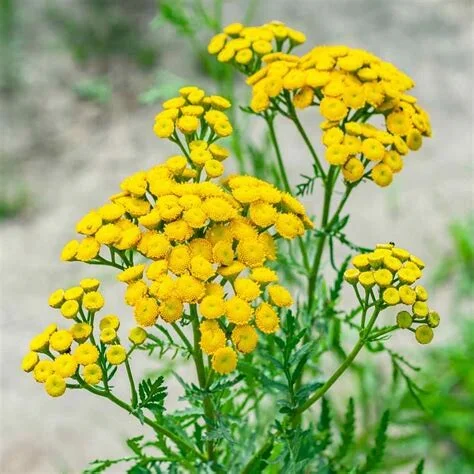Tansy (Tanacetum vulgare) 0.2g approx. 500 seeds
£1.55
Item number: 0.4g. Approx. 500 seeds.
4 in stock
Tansy is an attractive herb, a perennial native to Europe and Asia, with a rich history of cultivation dating back over at least 2,000 years. Its aroma and medicinal properties were used by ancient Greeks and Romans, and in medieval Europe, it was used as a strewing herb to repel pests and sweeten indoor spaces. During the Renaissance period in England, it was used to preserve meat and fish. Tansy was brought to North America by European settlers and has naturalized in many parts of the continent.
To grow Tansy, it needs a location in full sun and a moist but free-draining soil or growing medium. It can be grown in containers or in the ground, but a peat-free multipurpose potting mix with a little grit should work well. Thin as needed and transplant them into flowering position when they are 6-8 inches tall. Water and fertilise the plant sparingly, as too much nitrogen can cause the plant to become leggy. Remove dead flowers to encourage new blooms.Tansy seeds are easy to sow and germinate relatively readily, making them a popular choice for gardeners.
Tansy should not be ingested. Contact with skin may cause irritation or allergic reaction.
Tansy can be easily grown from seeds. To do so, follow these steps:
1. Sow seeds indoors 6-8 weeks before the last expected frost date or directly outside after the last frost when the soil is warm.
2. Prepare the soil by filling a seed tray or small pots with a well-draining seed compost and gently watering it.
3. Sow the seeds on the surface of the soil, spaced about 0.5 cm (1/4 inch) apart.
4. Germination takes 10 to 30 days, with the ideal temperature being 15-20°C (60-70°F).
5. Care for the seedlings by thinning them to 20 cm (8 inches) apart and transplanting them when they are 10 cm (4 inches) tall.
6. Water the seedlings regularly but avoid overwatering, pinch back young plants for bushy growth, and fertilize sparingly. Deadhead spent flowers to encourage continuous blooming and prevent self-sowing to control its spread.
